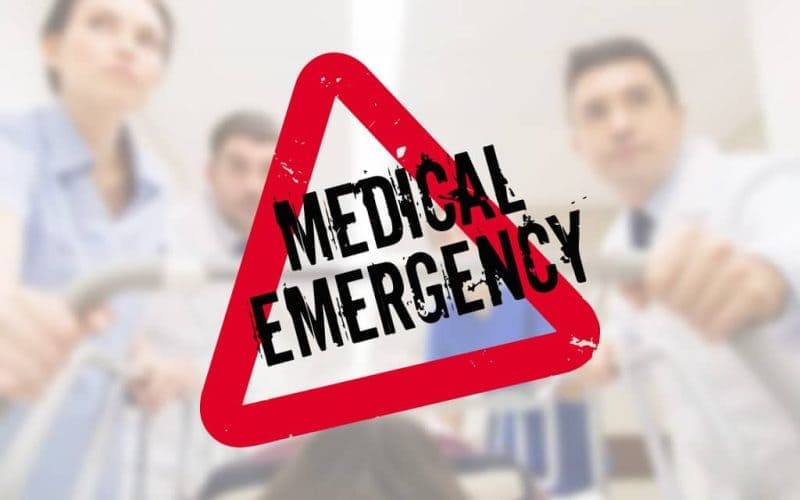What are the symptoms of septic shock?
Septic shock is a severe and potentially life-threatening condition resulting from an infection that leads to a dramatic drop in blood pressure and organ dysfunction. The symptoms of septic shock can develop rapidly and may include:
- Severe Drop in Blood Pressure: This is a hallmark of septic shock and can cause symptoms such as dizziness, lightheadedness, or fainting. The low blood pressure can also lead to inadequate blood flow to vital organs.
- Rapid Heart Rate: A significantly increased heart rate (tachycardia) is common as the body attempts to compensate for the low blood pressure.
- Rapid Breathing: Breathing may become rapid and shallow as the body tries to increase oxygen intake.
- Fever or Hypothermia: Patients may have a high fever or, in some cases, a low body temperature (hypothermia). Both extremes are signs of the body’s response to infection.
- Confusion or Altered Mental State: Septic shock can lead to confusion, disorientation, or decreased consciousness due to inadequate blood flow to the brain.
- Cold, Clammy Skin: The skin may become pale, cold, and clammy due to reduced blood flow and low blood pressure.
- Decreased Urine Output: There may be a significant reduction in urine output, indicating potential kidney dysfunction or kidney failure.
- Extreme Weakness or Fatigue: Patients may experience profound weakness, fatigue, or an overall feeling of being unwell.
- Nausea and Vomiting: Gastrointestinal symptoms such as nausea, vomiting, and abdominal pain can also occur.
- Organ Dysfunction: Signs of dysfunction in other organs, such as liver failure or heart failure, may be present, which could include jaundice (yellowing of the skin and eyes) or abnormal liver function tests.
Septic shock is a medical emergency that requires immediate treatment in a hospital setting. If you or someone else shows signs of septic shock, seek emergency medical attention promptly.
What are the causes of septic shock?
Septic shock is caused by a severe and systemic infection that leads to a life-threatening drop in blood pressure and widespread organ dysfunction. The primary causes of septic shock include:
- Bacterial Infections: The most common cause of septic shock is a bacterial infection, often from pathogens like Staphylococcus aureus, Escherichia coli, Pseudomonas aeruginosa, or Streptococcus species. These bacteria can enter the bloodstream and trigger a widespread inflammatory response.
- Fungal Infections: Fungal infections, particularly in immunocompromised individuals, can also lead to septic shock. Common fungi involved include Candida species and Aspergillus species.
- Viral Infections: In rare cases, certain viral infections can lead to septic shock, although this is less common than bacterial causes. Examples include severe cases of influenza or certain viral hemorrhagic fevers.
- Infections in Body Parts: Infections originating from specific body parts, such as the lungs (pneumonia), urinary tract (UTI), abdominal organs (appendicitis, peritonitis), or skin (cellulitis, abscesses), can progress to septic shock if they spread to the bloodstream.
- Healthcare-Associated Infections: Infections acquired in healthcare settings, such as those from surgical wounds, central lines, or catheters, can lead to septic shock, especially if proper infection control measures are not followed.
- Pre-existing Conditions: Chronic conditions like diabetes, cancer, or immunosuppression can increase the risk of developing septic shock by impairing the body’s ability to fight infections.
- Immune System Dysfunction: Conditions that affect the immune system, such as HIV/AIDS or autoimmune disorders, can predispose individuals to severe infections that may lead to septic shock.
- Complications from Medical Procedures: Invasive medical procedures or surgeries, particularly those involving the insertion of foreign objects (e.g., catheters, prosthetic devices), can introduce pathogens into the body and potentially cause septic shock.
In septic shock, the body’s response to the infection causes widespread inflammation, leading to blood vessel dilation, fluid leakage, and a critical drop in blood pressure. This affects blood flow to vital organs, potentially resulting in multi-organ failure if not promptly treated.
What is the treatment for septic shock?
The treatment for septic shock is urgent and involves a combination of medical interventions to stabilize the patient, address the underlying infection, and support organ function. The primary components of treatment include:
- Immediate Antibiotic Therapy: Broad-spectrum antibiotics are administered as soon as possible to combat the infection. Once the specific bacteria or pathogen is identified through cultures, antibiotic therapy may be adjusted to target the specific organism more effectively.
- Fluid Resuscitation: Intravenous fluids are given to increase blood volume and improve blood pressure. This helps counteract the effects of low blood pressure and ensures adequate blood flow to vital organs.
- Vasopressors: If fluid resuscitation alone does not restore blood pressure to normal levels, medications called vasopressors are used. These drugs, such as norepinephrine or epinephrine, constrict blood vessels and increase blood pressure.
- Supportive Care: Additional treatments may be required to support organ function and manage complications. This can include:
- Oxygen Therapy: To ensure adequate oxygen levels in the blood and tissues.
- Mechanical Ventilation: If respiratory distress or respiratory failure occurs.
- Renal Replacement Therapy: For patients with acute kidney failure, such as dialysis.
- Source Control: Identifying and addressing the source of the infection is crucial. This may involve:
- Surgical Intervention: To remove infected tissue, abscesses, or other sources of infection.
- Drainage: For abscesses or infected fluid collections.
- Monitoring and Adjustments: Continuous monitoring of vital signs, blood tests, and other indicators is essential to assess the response to treatment and make necessary adjustments.
- Supportive Measures:
- Nutritional Support: Patients may require nutritional support, such as enteral feeding or intravenous nutrition, to maintain energy and support recovery.
- Management of Blood Sugar Levels: Tight control of blood sugar levels is important, especially in diabetic patients.
Treatment of septic shock requires a multidisciplinary approach involving intensivists, infectious disease specialists, surgeons, and other healthcare professionals. Early recognition and prompt treatment are critical to improving outcomes and reducing the risk of long-term complications.

Leave a Reply
You must be logged in to post a comment.